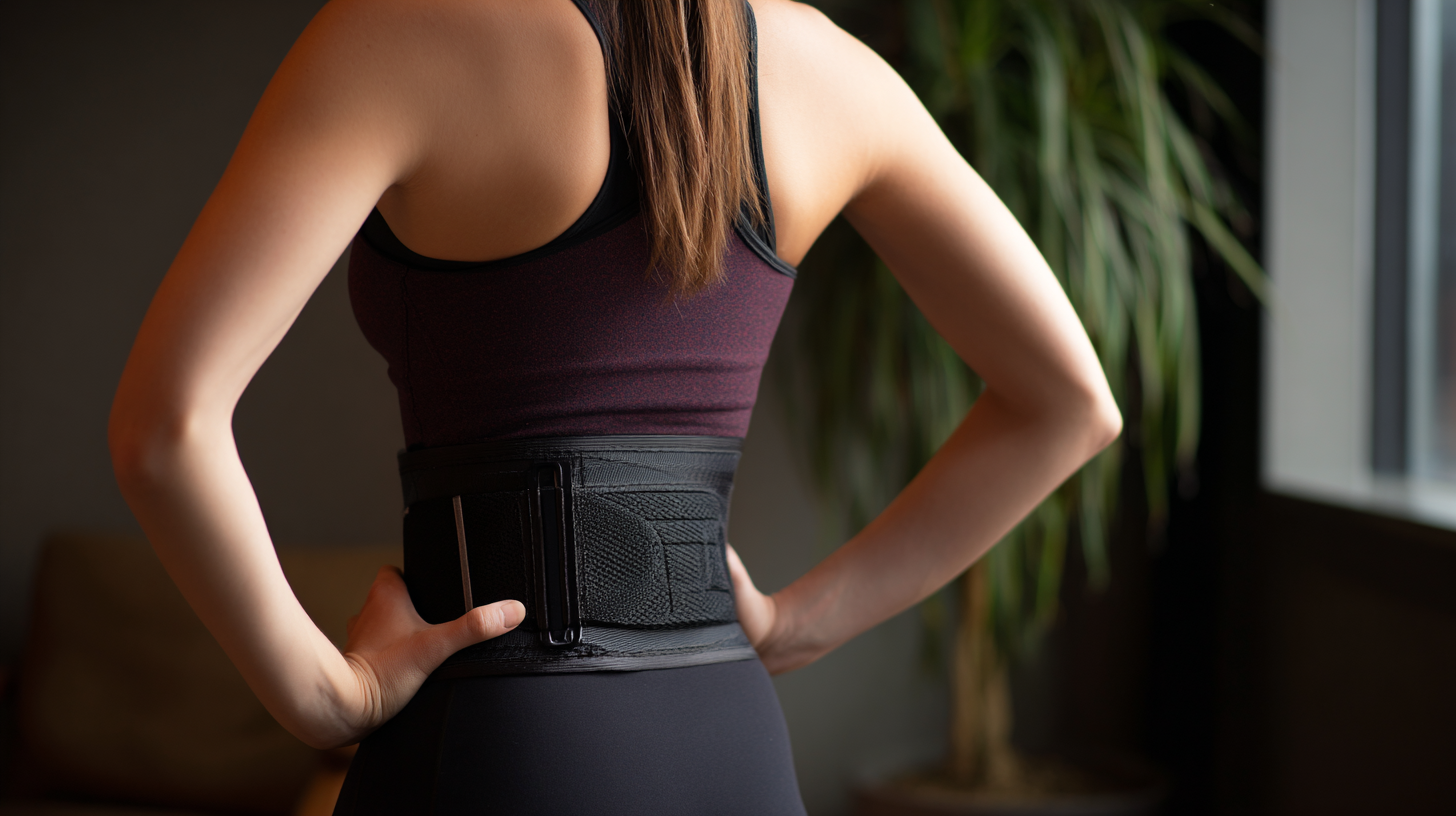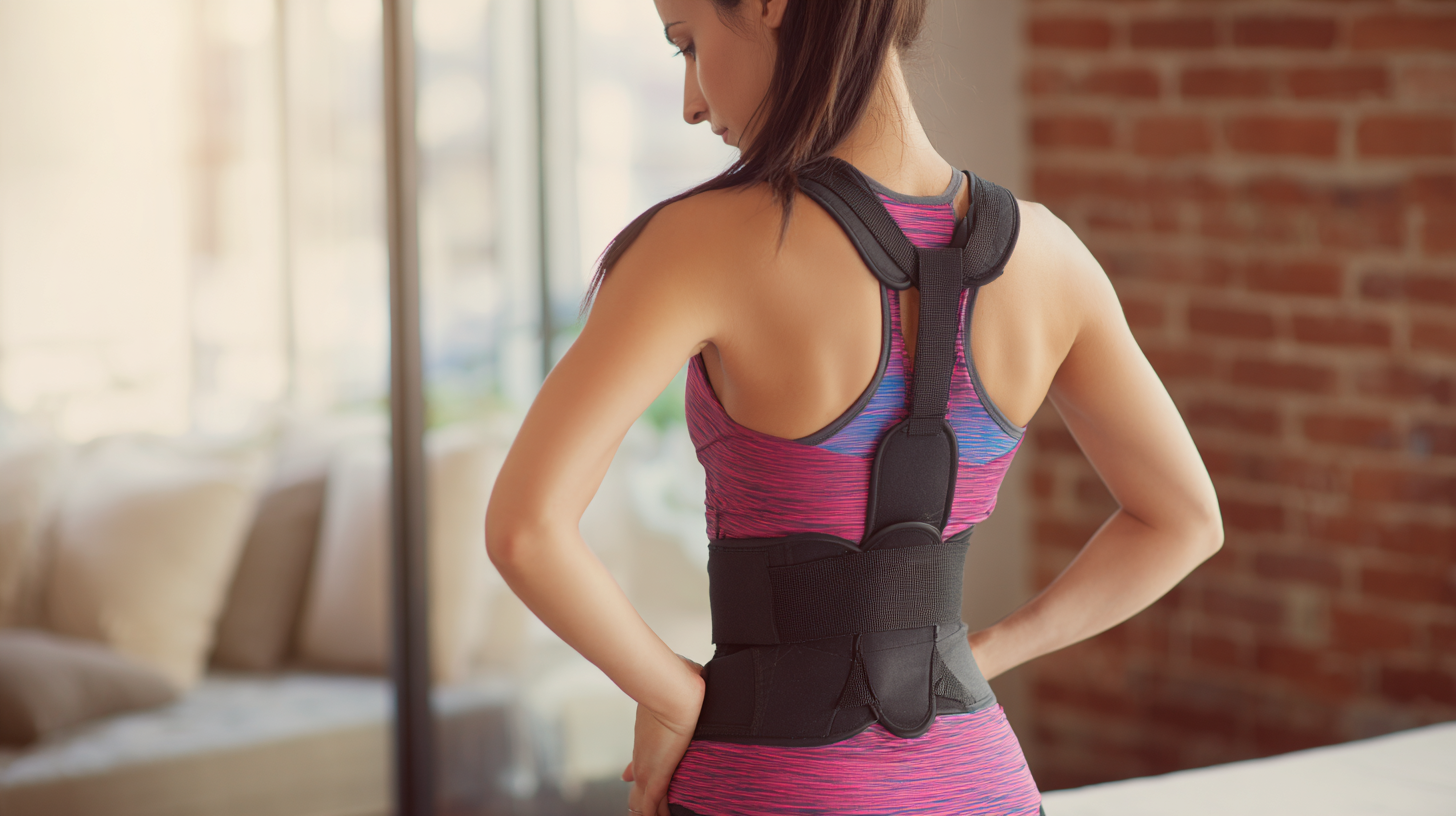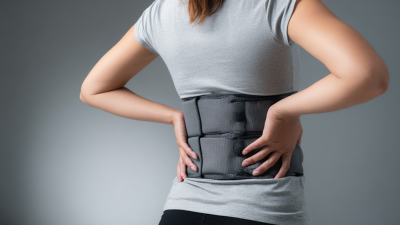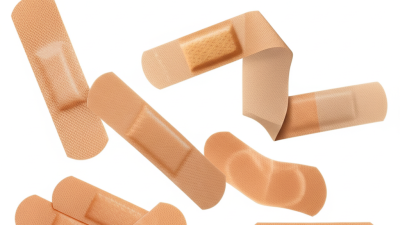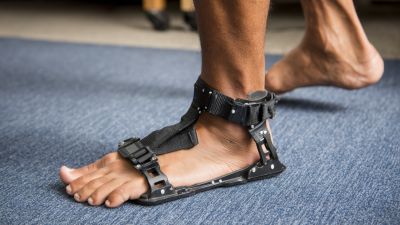The Ultimate Guide to Choosing the Right Lumbar Back Brace for Your Needs
When it comes to alleviating lower back pain, selecting the right lumbar back brace is crucial for both effective support and comfort. According to recent industry reports, nearly 80% of adults experience back pain at some point in their lives, making the need for proper back support more critical than ever. A well-designed lumbar back brace can help reduce pain and improve mobility for individuals recovering from injuries or managing chronic conditions.
With various types available—ranging from rigid braces for maximum support to flexible ones for increased comfort—it is essential to understand your specific needs.
The right lumbar back brace not only provides necessary stability but also promotes healthy posture and can significantly enhance daily activities, ensuring users can enjoy a better quality of life. Therefore, choosing the appropriate brace is fundamental in addressing back pain effectively.
Top 5 Features to Look for in a Lumbar Back Brace
When selecting a lumbar back brace, it’s essential to focus on key features that can enhance comfort and support. One of the most critical aspects is adjustability. Medical experts emphasize that a back brace should allow modifications to fit the user's body shape and level of discomfort. This personalized fit is crucial for effectively aligning the spine and alleviating pressure on the lumbar region.
Another significant feature to consider is the material used in the brace. Breathable fabrics can prevent overheating during use, which is particularly important for those who may wear the brace for extended periods. Additionally, a lumbar brace should offer targeted support, focusing on the five vertebrae in the lower back, allowing for greater mobility while providing stability. Research indicates that braces with an ergonomic design and adequate lumbar support can significantly reduce back pain and improve overall posture, making these features vital in the selection process.
7 Common Mistakes to Avoid When Choosing a Back Brace
When selecting a lumbar back brace, many individuals make critical mistakes that can hinder their recovery or comfort. One of the most common pitfalls is choosing a brace solely based on appearance or brand reputation rather than fit and function. A brace that looks good may not provide the necessary support, while less popular options might be more effective. It’s essential to focus on proper sizing and adjustability to ensure the brace conforms to your body’s unique shape.
Another prevalent mistake is overlooking the material and breathability of the back brace. Users often select braces made from synthetic materials without considering how they will impact wearability over long periods. A poorly ventilated brace can lead to discomfort due to sweating and skin irritation. Instead, opt for options made from breathable, hypoallergenic fabrics that allow for air circulation. By being mindful of these common errors, you can choose a lumbar back brace that not only meets your support needs but also enhances your overall comfort during recovery.
3 Types of Lumbar Support: Which One is Right for You?
When it comes to lumbar support, three primary types of back braces stand out: rigid, semi-rigid, and elastic. Rigid braces provide maximum stability, often recommended after surgery or for severe injuries. According to the American Academy of Orthopaedic Surgeons, these braces can limit motion and reduce strain on the spine, making them essential for recovery and pain management in patients with acute back issues.
On the other hand, semi-rigid braces offer a compromise between support and flexibility. They are beneficial for individuals needing both stability and the ability to perform daily activities. A study in the Journal of Orthopaedic Research highlights that semi-rigid braces can decrease pain while allowing for a more natural range of movement, making them ideal for those with chronic conditions like osteoarthritis.
Lastly, elastic braces, which provide light support and compression, are great for preventing injuries during physical activities. They promote muscle warmth and circulation, decreasing the risk of strains. The National Institutes of Health reported that over 80% of individuals engaged in manual labor find elastic lumbar supports beneficial when performing heavy lifting tasks, emphasizing their preventive capabilities for back pain. Choosing the right lumbar brace ultimately depends on the specific needs, activity levels, and recovery goals of the individual.
The Ultimate Guide to Choosing the Right Lumbar Back Brace for Your Needs
This chart illustrates the effectiveness of different types of lumbar back braces based on user satisfaction ratings. The data is collected from a survey of individuals using various lumbar support options.
9 Benefits of Wearing a Lumbar Back Brace for Pain Relief
Wearing a lumbar back brace offers numerous benefits, particularly for those suffering from chronic pain or back injuries. One of the primary advantages is pain relief. The brace provides support to the lumbar region, helping to alleviate pressure on the spine and reduce discomfort during daily activities. This can be particularly beneficial for individuals who have jobs that require prolonged sitting or heavy lifting.
Another significant benefit of lumbar back braces is improved posture. Many people struggle with poor posture, which can lead to further back issues. A back brace encourages proper alignment of the spine, making it easier to maintain good posture throughout the day. This can not only enhance comfort but also contribute to overall spinal health.
**Tip:** When selecting a lumbar back brace, ensure it fits snugly but not too tight. A well-fitted brace will provide the necessary support without restricting movement. It's also important to consult with a healthcare professional to determine the best type of brace for your specific condition and needs.
Additionally, lumbar braces can aid in the recovery process for those recovering from surgery or injury. By providing stability, they can help prevent further injury and promote healing, allowing individuals to return to their normal activities more quickly.
**Tip:** Look for braces that are adjustable and made with breathable materials to ensure comfort during extended wear. Comfort is key to ensuring compliance and effectiveness in managing back pain.

6 Tips for Properly Fitting Your Lumbar Back Brace for Maximum Support
When selecting a lumbar back brace, proper fit is crucial for maximizing support and alleviating discomfort. According to a study published in the Journal of Orthopedic Research, a well-fitted lumbar brace can reduce pressure on the spine by up to 50% during physical activity. To achieve this level of support, follow these six tips for fitting your brace effectively.
First, ensure that the brace is snug but not restrictive. It should support your lower back without compromising circulation or causing discomfort. Research by the American Physical Therapy Association indicates that a properly fitted brace can enhance stability, which is essential for individuals with chronic lower back pain. Second, adjust the straps to achieve a balance between tightness and comfort; they should hold the brace in place without digging into the skin.
Third, your brace should sit comfortably on your pelvis, not your waist. The lumbar region requires targeted support, and positioning the brace correctly enhances its effectiveness. Fourth, consider the brace material and design. A breathable fabric can prevent overheating during prolonged wear, which is supported by data from the National Institutes of Health. Lastly, consult with a healthcare professional to ensure your choice meets your specific needs, making adjustments as necessary for optimal comfort and support.

Home
About Us
Products
Videos
Download
News
FAQ
Blog
Contact Us
